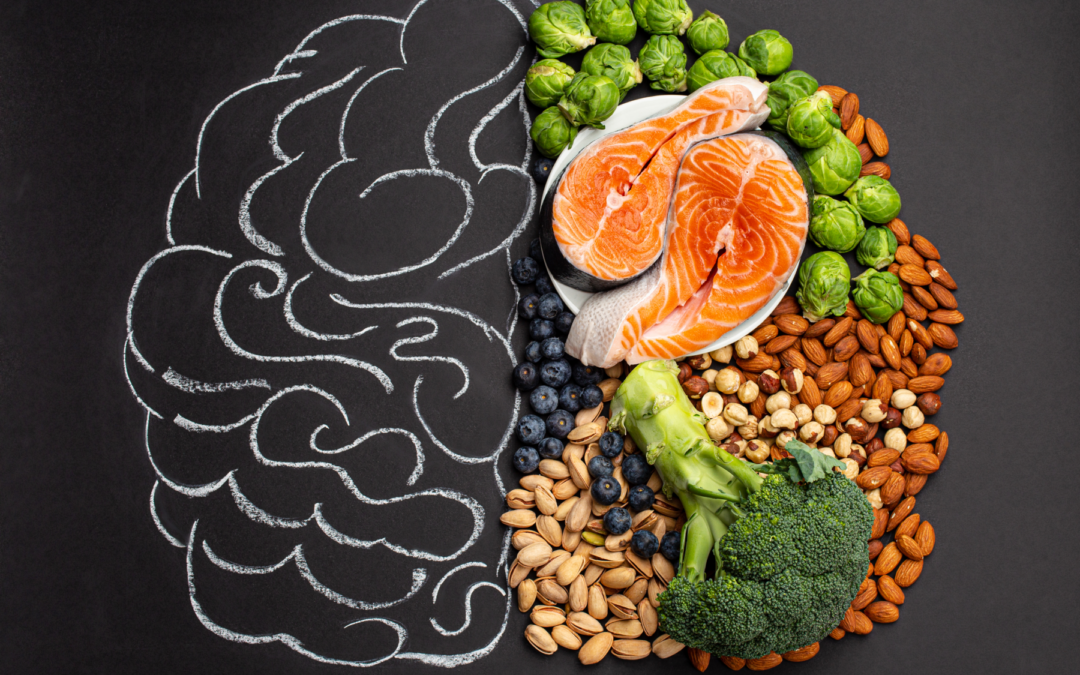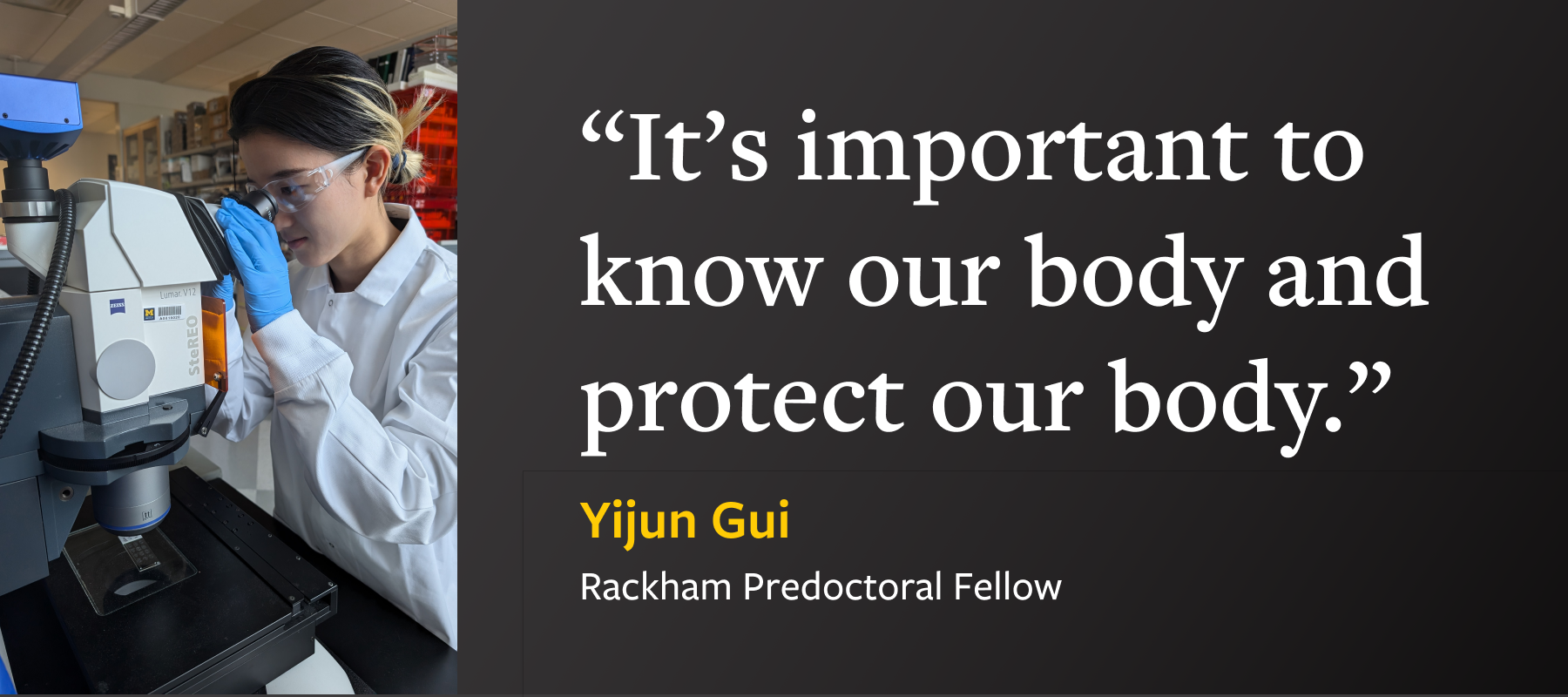For most healthy adults, even our best days are punctuated every three to four hours by a nagging sense of weakness and maybe even irritability. Belly rumbling, we look at the clock: It’s almost mealtime.
Feelings of hunger play a critical role in helping our bodies maintain homeostasis, or a balance in our internal systems. For Rackham neurobiology doctoral student Yijun Gui, who studies how brain neurons and receptors instigate food-seeking behaviors, hunger is a great example of the “body-brain axis,” a bidirectional communication pathway between the gut and the mind.
“Hunger starts when your stomach senses physical emptiness, and/or a lack of nutrients, and sends hormones into your bloodstream. When the message gets to our brain, we know, ‘There’s nothing in my stomach and I need to stuff it up,’” Gui says.
Individuals living with eating disorders can experience significant disruptions to the body-brain axis, including inadequate responses to homeostatic body signals designed to stimulate weight restoration.
For example, when people experience caloric restriction or fasting, it’s typically followed by an impulse to overeat, known as fasting-induced hyperphagia and activated by a group of neurons in the brain called the AgRP. People living with anorexia nervosa can develop a resistance to this response.
Gui’s recent experiments have shown that one way to manipulate AgRP neurons is by targeting MC3R, a receptor whose functions include regulating energy metabolism and eating.
“The activation of the MC3R receptor, particularly in AgRP neurons, has the potential to promote appetite and could offer a therapeutic strategy to relieve symptoms of anorexia,” Gui says.
While people living with anorexia nervosa often find healing from talk therapy, nutritional support, and psychiatric medications to address anxiety and depression, which commonly occur together, there are currently no medications available to treat the disorder itself that have been approved by the Food and Drug Administration.
“Compared to obesity, which has several drugs on the market, we don’t really know much about anorexia nervosa. I would say maybe because it’s a relatively smaller patient group, and because of its complexity, there is no good model for animal research of anorexia so far,” she says.
Food for Thought
Technological advancements have played a vital role in improving neuroscientific research, including developing better understandings of eating behaviors. Beginning in the 1960s, researchers used mouse models to discover that the hypothalamus was the brain’s control center for eating behaviors.
In recent years, researchers like Gui have benefitted from the ability to implant cameras into mouse brains via microsurgeries, which revealed hundreds of thousands of active neurons within the hypothalamus, allowing the research to become more specific.
“After the surgery, the mice can still freely behave and just explore the world, and researchers can see all the neuron activity in real time,” Gui says.
What researchers observe is that right before the mice eat—in other words, when hunger strikes—AgRP neurons activate.
“It is this evidence that makes us believe AgRP neurons are very important and they can directly be associated with hunger sensing,” she says.
When researchers silence the AgRP neurons, their mice refuse food. When the AgRP neurons are activated, the mice eat voraciously, even when they are well fed.
“This suggests that AgRP neurons are not only sufficient to drive food seeking-behaviors—they are also necessary for our body to maintain regular food intake to maintain our energy,” Gui says.
Mind and Body
The symptoms of anorexia nervosa are complex and will likely always benefit from a multi-faceted treatment approach. Afterall, the hypothalamus, the setting for all this AgRP activation, is just one part of the limbic system, a group of interconnected brain structures responsible for behavioral and emotional responses. Gui thinks that healing the body’s internal states at a neuronal level can be an immense help with emotional healing.
“To me, it’s all related. When something changes at a biological level to fix dysfunctional neuronal activity, related active emotions might also be mediated,” Gui says.
Similarly, Gui acknowledges that external societal factors can be both triggers for the disorder and barriers to its treatment.
“I hope we can normalize getting help for anorexia nervosa through medication one day, just like we’d get help for any type of illness. It’s important to know our body and protect our body.”
How Rackham Helps
Gui is a recipient of a 2024 Rackham Predoctoral Fellowship, supporting outstanding doctoral candidates working on dissertations that are unusually creative, ambitious, and impactful.
Additionally, she’s received a Rackham Graduate Student Research Grant and two travel grants to fund conference attendance at the Gordon Research Conference on Hypothalamus and an American Physiology Society conference in Long Beach, California.
“Those two conferences were very thought provoking and I learned so much.”


